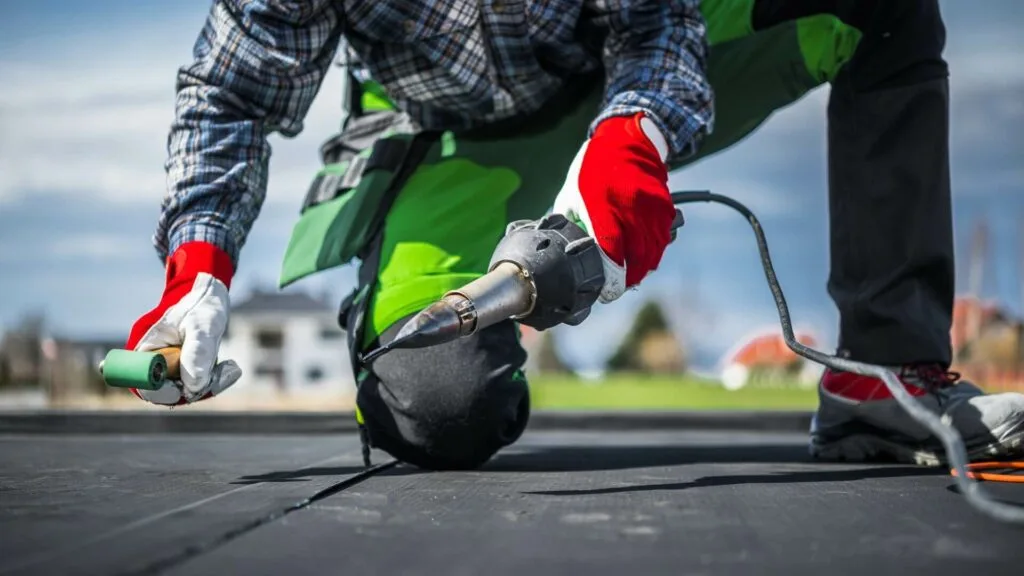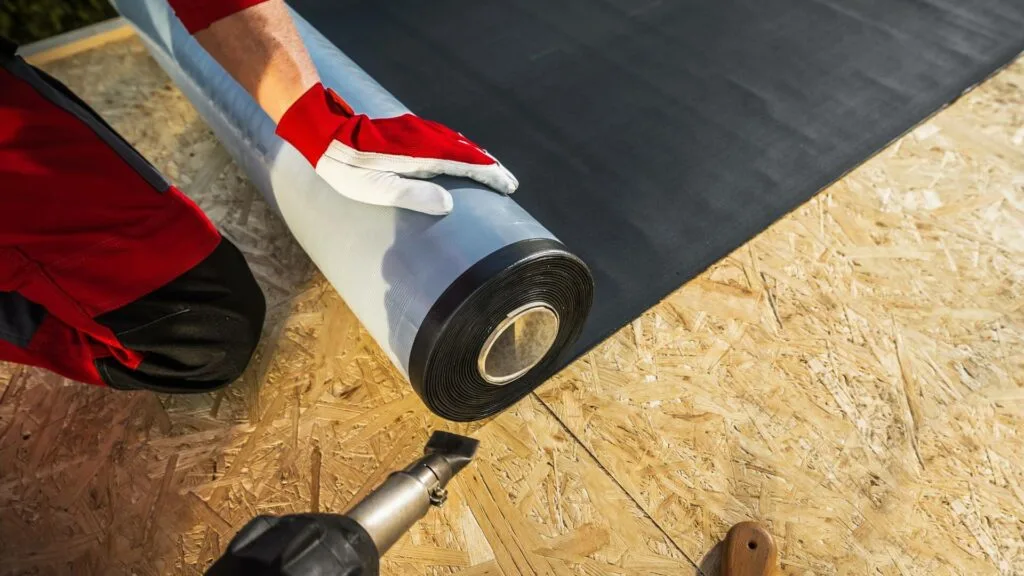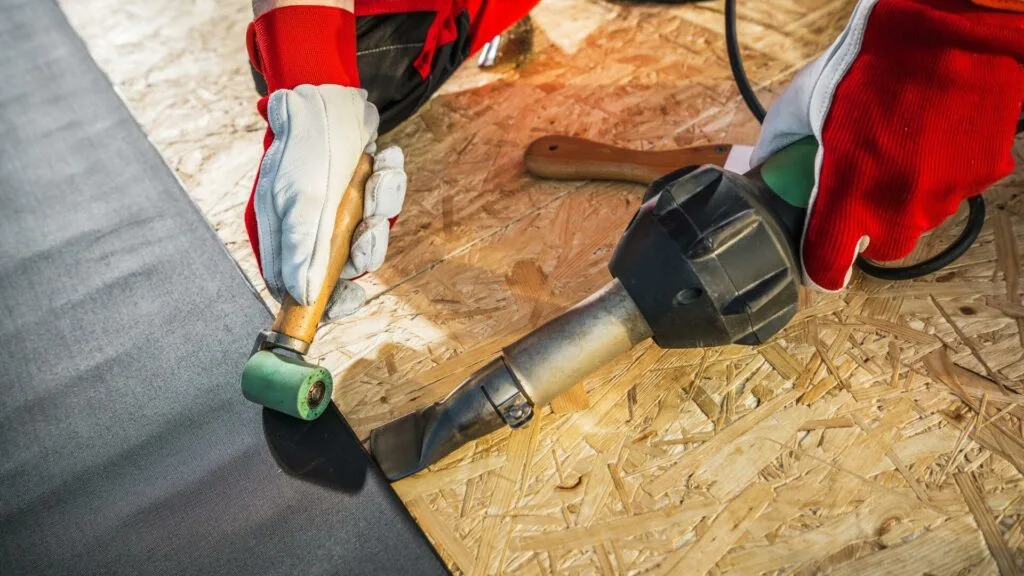EPDM roofing, short for Ethylene Propylene Diene Monomer, is a highly durable synthetic rubber roofing membrane widely used in low-slope buildings. Known for its longevity and resilience, EPDM has become a popular choice among contractors and property owners alike. This comprehensive guide will delve into the key aspects of EPDM roofing, including its benefits, installation process, and maintenance requirements.

The Advantages of EPDM Roofing
EPDM roofing stands out for its remarkable durability and flexibility, making it a preferred option for many roofing projects. One of the primary advantages is its exceptional weather resistance. EPDM membranes can withstand extreme temperatures, from scorching heat to cold, without cracking or deteriorating. This resilience ensures that the roof remains intact and functional for decades, often exceeding 30 years of service life with proper maintenance. Additionally, EPDM is highly resistant to ozone and ultraviolet (UV) radiation, which are common culprits of roofing material degradation. This attribute further extends the lifespan of EPDM roofs, reducing the need for frequent replacements and repairs.
Another significant benefit of EPDM roofing is its superior waterproofing capabilities. The material’s inherent elasticity allows it to accommodate building movements and thermal expansion without compromising its watertight seal. This makes EPDM an ideal choice for regions with varying weather conditions. Moreover, the membrane’s dark color helps to absorb heat, potentially reducing heating costs during colder months. However, for those in hotter climates, reflective coatings can be applied to EPDM roofs to enhance their energy efficiency by reflecting sunlight and reducing cooling costs. The combination of these features makes EPDM roofing a versatile and cost-effective solution for both residential and commercial buildings.
Installation Process of EPDM Roofing
Installing EPDM roofing is a straightforward process, but it requires careful preparation and attention to detail to ensure optimal performance. The installation begins with the preparation of the roof deck, which must be clean, dry, and free of any debris or sharp objects that could damage the membrane. Once the surface is prepared, an adhesive is applied to either the roof deck or the underside of the EPDM membrane, depending on the specific installation method chosen. There are two primary methods: fully adhered and mechanically fastened. In the fully adhered method, the adhesive is applied to the entire surface, ensuring a strong bond between the membrane and the substrate. In contrast, the mechanically fastened method involves securing the membrane with fasteners and plates, which are then covered with seam tape to ensure a waterproof seal.
The next step involves carefully rolling out the EPDM membrane and positioning it over the adhesive-coated roof deck. This requires precision to avoid wrinkles and ensure a smooth, even surface. Once in place, the membrane is pressed down to establish a secure bond with the adhesive. Seams between membrane sheets are sealed using seam tape and a roller, creating a continuous waterproof barrier. The final step involves inspecting the entire roof to ensure all seams are properly sealed and the membrane is securely attached. Proper installation is crucial to maximizing the lifespan and performance of an EPDM roof, so it is often recommended to hire experienced professionals for the job.
The Importance of Contacting Professionals for EPDM Roofing
While EPDM roofing offers numerous benefits and is relatively straightforward to install, the importance of contacting professionals for both installation and maintenance cannot be overstated. Professional roofing contractors possess the expertise and experience necessary to handle the intricacies of EPDM roofing, ensuring that the membrane is properly installed and performs as intended. Improper installation can lead to a host of problems, including leaks, reduced lifespan, and costly repairs. Professionals are equipped with the right tools and materials to execute the job efficiently and effectively, adhering to industry standards and manufacturer guidelines.
Moreover, experienced contractors can provide valuable insights into the best practices for maintaining EPDM roofing, tailored to the specific needs of the building and its environment. They can identify potential issues that may not be apparent to the untrained eye and address them before they escalate into major problems. Regular maintenance conducted by professionals ensures that all aspects of the roofing system, from the membrane to the underlying structure, remain in optimal condition. This proactive approach helps to prevent damage, extend the roof’s lifespan, and protect the overall investment.

Environmental Benefits of EPDM Roofing
EPDM roofing is not only advantageous for its durability and cost-effectiveness but also for its environmental benefits. One of the key environmental advantages of EPDM is its energy efficiency. The membrane’s ability to reflect or absorb heat, depending on the applied coating, can significantly reduce the energy consumption of a building. Reflective coatings help to keep buildings cooler in the summer, reducing the need for air conditioning. In contrast, the natural dark color of EPDM can help retain heat during colder months, lowering heating costs. This adaptability makes EPDM an excellent choice for reducing a building’s carbon footprint and energy expenses.
Furthermore, EPDM is an eco-friendly material due to its recyclability. At the end of its life cycle, EPDM roofing can be recycled and repurposed, reducing waste in landfills. The production process of EPDM also has a lower environmental impact than other roofing materials, as it does not release harmful toxins or pollutants. By choosing EPDM roofing, property owners contribute to sustainable building practices and promote environmental conservation. This makes EPDM not just a smart financial investment but also a responsible choice for those looking to reduce their environmental impact.

EPDM roofing presents a robust, versatile, and environmentally friendly solution for low-slope roofing applications. Its numerous advantages, including exceptional durability, and energy efficiency, make it a preferred choice for many building owners and contractors. The installation and maintenance processes, while relatively straightforward, benefit significantly from the expertise of professional roofers, ensuring optimal performance and longevity. Additionally, the environmental benefits and long-term savings associated with EPDM roofing further underscore its value as a sustainable and economical roofing option. By understanding and leveraging these benefits, property owners can make informed decisions that enhance the performance, sustainability, and cost-effectiveness of their buildings.

Jessi is the creative mind behind The Coffee Mom, a popular blog that combines parenting advice, travel tips, and a love for all things Disney. As a trusted Disney influencer and passionate storyteller, Jessi’s authentic insights and relatable content resonate with readers worldwide.
